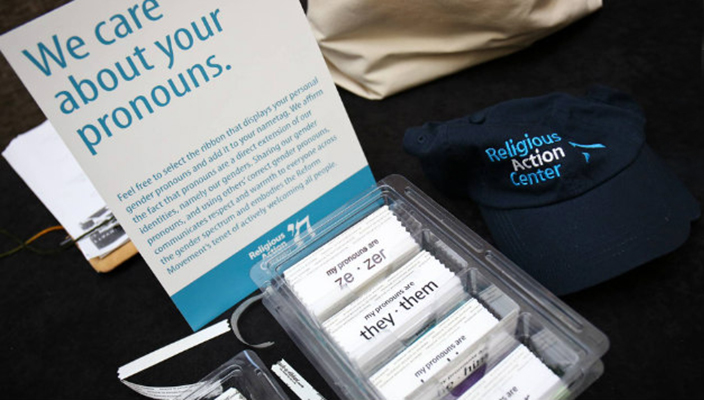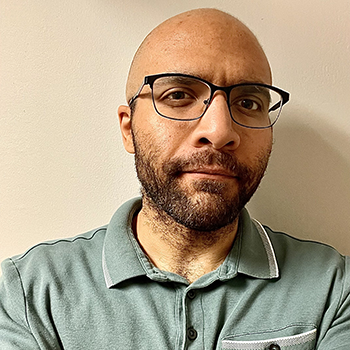
Perhaps you’ve been to a Shabbat service, a congregational speaking event, or even at a work function where you heard someone include their pronouns while introducing themselves, i.e. “Hello, my name is Rachel, and my pronouns are she, her, and hers.” You may have also seen instances of people including their pronouns on their email signatures, badges, and name tags at communal functions.
You might wonder, “Why is including my pronouns important? Won’t people know my pronouns just by looking at me?”
Individuals who are cisgender (cis) – that is to say, those who identify with the gender they were assigned at birth – rarely have to think about their pronouns. However, individuals who are transgender, gender-expansive, and nonbinary are often addressed with incorrect pronouns, intentionally and accidentally, which contributes to the invalidation and erasure of their identities while further perpetuating cis/heteronormative societal structures.
Sharing our pronouns showcases part of our identities, especially when it comes to our gender identities. Our communities include people of varying gender identities, and they all have their own sets of pronouns. Referring to individuals using their correct pronouns conveys respect and validation to everyone in our communities – part of the Jewish imperative to treat others the way we wish to be treated.
Might the Jewish imperative to treat others as we wish to be treated apply to gender identity as well? After all, if each of us wishes to be treated with respect for our own identities, surely it aligns with our Jewish values to respect others’ identities.
When we introduce ourselves by sharing our pronouns, we share responsibility for building relationships with people who are different from us. Such actions are a powerful demonstration of allyship and recognizes the issues faced by those in our communities who are marginalized.
Sinclair Sexsmith (they/them), a nonbinary journalist, explains how such a seemingly small act can go a long way:
“When you do that, I feel more comfortable being visibly out as nonbinary. When we’re doing the socializing part of whatever event we’re at, and we are introduced, I automatically feel warmer toward you – regardless of your gender or presentation. I feel much more comfortable talking to you because you already tell me you know a little about gender. Thank you.”
There is precedence in Judaism for acknowledging different gender identities. Jewish scholars in ancient times acknowledged a wide spectrum of genders. In fact, Jewish texts contain more than 1,600 references to people outside of the gender binary.
Modern Reform Judaism in particular understands that many people openly identify as transgender, nonbinary, or gender-expansive. In 2015, the Union for Reform Judaism adopted its historic “Resolution on the Rights of Transgender and Gender Non-Conforming People,” expressing our Movement's commitment to the full equality, inclusion, and affirmation of people of all gender identities and expressions.
The Union for Reform Judaism’s audacious hospitality work aims to meet the needs of everyone in our community, including those who are currently on the margins. We recognize that doing so requires respecting the personal autonomy of everyone within our communities. One way to do that is by acknowledging and using correct pronouns.
The next time you introduce yourself, consider sharing your pronouns, too. Whether verbally, in an email signature, or on a nametag, adding she/her/hers, he/him/his, or they/them/theirs (a common gender neutral pronoun) to your introductions helps balance your relationships by creating a way for everyone to share their gender identity.
Sharing your pronouns also communicates your awareness of the variety and fluidity of gender identity. Even if you are not currently aware of any transgender, nonbinary, or gender non-conforming people in your community, your actions can provide a safe way for them to articulate their identity.
This practice provides a warm welcome and helps create a comfortable environment where people can be their true selves in authentic relationship with others.
Explore Jewish Life and Get Inspired
Subscribe for Emails

